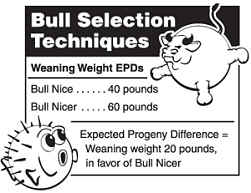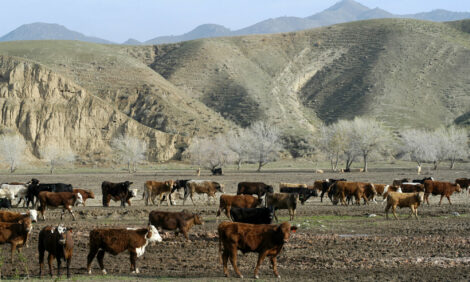



Don't Buy Blowfish, Use EPDs
NORTH DAKOTA - The trick in a good beef-breeding plan is to stack the bull pen full of great EPDs, reports Kris Ringwall, Beef Specialist NDSU Extension Service.
On most winter nights or even days, most cattle producers do not sit around and ponder the activity of blowfish, sometimes called puffer fish. No, this time of year cattle producers find themselves paging through bull catalogs and dreaming of the perfect bull.
The evening pictures bring about a certain amount of contentment to finish the day. The perusal of the estimated progeny differences (EPDs) rejuvenates some basic math skills, quickly sorting the best to the top. But what about blowfish?
Blowfish have the unique ability to puff themselves up by rapidly swallowing large quantities of water or air; therefore, along with significant spines, they become a rather difficult target for pending predators. As a young child, I had the privilege of having a dried blowfish on my shelf and was always amazed just how difficult any contact with a blowfish was.
Blowfish, like many fish, simply spend their time eating and enjoying life, but are obviously quite prepared for survival. A little natural selection and there seems to be a real opportunity to simply look big and mean and survive.
But, underneath, there is simply a little fish that stays alive and continues on for another day. The connecting point for beef producers is that there are blowfish in the beef industry as well. These are bulls that have a knack for looking big and capable as you stroll by their pen at the bull sale, but when you get them home, they are just another bull eating hay.
Looking big and mean may be a good strategy for blowfish, but in the world of commercial beef, it is not a very wise strategy. The best defense for avoiding bulls that are simply blowfish is having a plan and using it. The best plan for any bull-buying strategy is based on the use of EPDs.
Yes, EPDs are the root of any well-developed selection plan within the commercial beef business. Although crossbreeding certainly has the ability to offset problem areas as well, all beef-breeding programs must start with a selection plan to arrange the best genetics (DNA) available in a producer's herd.
So, the basics are simple. Every bull, at least those bulls recorded with a breed association, should have a reasonable list of EPD values. EPD values are the expected progeny differences when two bulls are randomly mated to cows of the same breed. These expected progeny differences are simply the subtracted values of one bull's EPD versus another bull's EPD.
For example, if a bull (named Nice) has a weaning weight EPD of 40 pounds and another bull (named Nicer) has a weaning weight EPD of 60 pounds, then the bull named Nicer should, on the average, sire calves that have the genetic potential to weigh 20 pounds heavier at weaning. The calculation is 60 pounds (Nicer) minus 40 pounds (Nice) equals 20 pounds. In other words, a 20-pound genetic advantage for the Nicer bull.
This is the same concept for all EPD values. A quick review of the numbers will allow any producer who is looking for a new bull to soon figure out who is the real bull in terms of growth or size versus who is the blowfish and simply puffed full of air and looking good for the day.
The trick in a good beef-breeding plan is to stack the bull pen full of great EPDs. Buying the right bull is an offensive move for survival.
And don't forget that even though some bulls are simply blowfish, a few bull producers are, too. Beware, don't give in to the big, puffed-up bull. Hold your ground and buy the bull you need based on EPDs.
Further Information
BeefTalk: Understanding Expected Progeny Differences (EPD's)TheCattleSite News Desk


